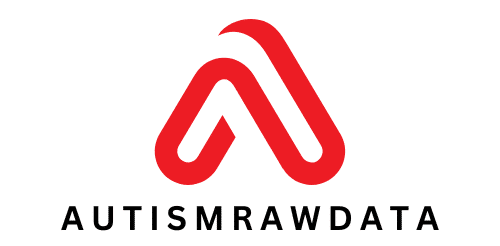In this modern-day society, where resources are dwindling, the need for sustainable solutions has never been more critical. Water, as fundamental as it is, often faces issues regarding its supply, especially in urban areas. The solution? Well, it may be quite literally falling from the sky. Rainwater harvesting (RWH), an ancient practice that is garnering renewed interest, could be the key to alleviating water scarcity.
Utilising an array of systems and methods, urban areas in the UK and beyond can capitalise on the abundant rainfall to supplement their water supply. This article will delve into the advanced water harvesting techniques, their benefits, and potential applications in urban settings.
Cela peut vous intéresser : What Are the Best Practices for Live Streaming Church Services in the UK?
Rainwater Harvesting Systems: An Overview
Before diving into the nitty-gritty of the advanced water harvesting techniques, let’s first understand the basics of RWH. From a simple barrel at the end of a downspout to large underground cisterns equipped with pumps and filtration systems, RWH systems come in various shapes and sizes.
Typically, a rainwater harvesting system comprises a catchment area (usually the roof of a building), conveyance system (gutters and pipes), storage tank, and distribution system. The harvested rainwater can serve various uses, including irrigation, toilet flushing, laundry, and, with proper treatment, drinking.
Cela peut vous intéresser : What Are the New Trends in Customizable Wearable Medical Devices?
Advanced Rainwater Harvesting Techniques
Technological developments have enabled the evolution of rainwater harvesting to suit urban applications better. These advanced techniques range from simple improvements on traditional methods to sophisticated systems integrating modern technology.
The Green Roof system, for instance, serves not only as a catchment area but also functions as a miniature ecosystem. It filters and slows down the runoff, reducing the load on urban drainage systems. Meanwhile, the Rainwater Garden utilises strategically placed plants and soils to filter pollutants and slow down the runoff.
On the other hand, the Underground Storage System utilises subterranean tanks to store significant volumes of rainwater, saving surface space. This technique is particularly useful in densely populated urban areas where space is at a premium. Moreover, the Rainwater Harvesting and Reuse System (RHR), a high-tech solution, integrates filtration and disinfection processes to yield potable water.
Google Scholar and Crossref: Tools for Discovering Rainwater Harvesting Research
In the age of digital information, it’s critical to stay abreast of the latest research and developments in the field of rainwater harvesting. Google Scholar and Crossref are two exceptionally useful tools for this purpose.
Google Scholar is a freely accessible search engine that indexes a vast range of scholarly literature. By typing in keywords such as "rainwater harvesting", "urban", "system", or "UK", you can find a plethora of research papers, theses, books, and conference papers.
Similarly, Crossref is a citation-linking network for scholarly literature. It allows you to track the discourse of rainwater harvesting across academic fields. By turning to these platforms, you can keep abreast of the latest innovations and find inspiration for your rainwater harvesting projects.
Rainwater Harvesting in Dhaka, Bangladesh: A Case Study
As one of the most densely populated cities globally, Dhaka teaches us a lot about the potential of urban rainwater harvesting. Despite facing severe water scarcity, Dhaka receives abundant rainfall, especially during the monsoon season.
In recent years, the government and numerous NGOs have promoted RWH programs across the city. As a result, many households and establishments have installed rainwater tanks and filtration systems. These initiatives have not only reduced the city’s dependence on the overstressed water supply but also mitigated flooding in low-lying areas.
This case demonstrates the transformative potential of rainwater harvesting when adopted at a mass scale, providing inspiring insights for other urban areas worldwide, including those in the UK.
The Future of Water Harvesting in the UK’s Urban Areas
The UK’s urban areas have vast potential for rainwater harvesting. Given the regular rainfall and increasing pressure on water resources, adopting advanced water harvesting techniques could prove transformative.
Technologies like digital rainwater harvesting systems, which can be remotely monitored and controlled, offer exciting possibilities. Besides, the development and promotion of building codes that encourage or require rainwater harvesting in new developments can significantly enhance uptake.
However, the benefits of rainwater harvesting extend beyond water supply. For example, by reducing runoff, these systems can alleviate flooding – a growing concern in many urban areas. Therefore, embracing advanced water harvesting techniques can contribute to more resilient, sustainable, and livable cities in the UK.
To capitalise on these opportunities, concerted efforts from stakeholders, including planners, developers, and residents, are vital. It’s also crucial to raise awareness about the benefits of rainwater harvesting and provide technical and financial support to those interested in adopting these systems.
Although there’s a long road ahead, the prospects for rainwater harvesting in the UK’s urban areas are promising, thanks to the continued advancement of technology and growing recognition of its multiple benefits.
The Role of Rainwater Harvesting in Climate Change Mitigation
Advancements in rainwater harvesting techniques can also play a significant role in climate change mitigation. As urban areas globally grapple with the multi-faceted impacts of climate change, including erratic rainfall patterns and increased flooding, rainwater harvesting emerges as a potential solution.
The use of rainwater harvesting systems can help urban areas become more resilient to the impacts of climate change. These systems can reduce the reliance on mains water, thereby preserving water resources and contributing to water management. By capturing and storing rainwater during periods of heavy rainfall, these systems can help mitigate the risk of urban flooding—a growing concern due to climate change.
Moreover, the stored rainwater provides an alternative water supply during dry periods, thereby reducing vulnerability to water scarcity. Utilising harvested rainwater for non-potable uses such as toilet flushing and gardening can also reduce the demand for treated drinking water, thus saving energy and reducing carbon emissions.
The Green Roof and Rainwater Garden techniques, for instance, can help mitigate urban heat island effect—a phenomenon where urban areas are significantly warmer than their rural surroundings due to human activities. These techniques create green spaces that can absorb heat and release moisture, thereby cooling the urban environment.
Application of Rainwater Harvesting Systems in UK’s Urban Areas
Rainwater harvesting systems can be widely applied in UK’s urban areas, contributing to both water management and climate change mitigation. In residential buildings, harvested rainwater can be used for toilet flushing, laundry, and garden irrigation, thereby reducing mains water usage.
Commercial and public buildings with large roof areas, such as schools, hospitals, and offices, present an excellent opportunity for rainwater harvesting. The harvested rainwater can be used for toilet flushing and cleaning purposes, significantly reducing the demand for drinking water. Moreover, it can be used to maintain green spaces around these buildings, enhancing the urban environment.
In urban landscapes, advanced techniques like Green Roofs and Rainwater Gardens can be integrated into city planning and design. These not only provide aesthetic and mental health benefits but also contribute to biodiversity, air quality, and climate change mitigation.
However, the successful implementation of rainwater harvesting systems in urban areas requires concerted efforts from all stakeholders. Planners and architects should incorporate rainwater harvesting into building designs from the outset. Local councils should encourage and incentivise the adoption of these systems through favorable policies and regulations. Furthermore, the public should be educated about the benefits of rainwater harvesting and how to maintain and use these systems effectively.
Conclusion
Rainwater harvesting holds immense potential for addressing water scarcity and climate change impacts in the UK’s urban areas. Advanced water harvesting techniques, such as Green Roofs, Rainwater Gardens, Underground Storage Systems, and Rainwater Harvesting and Reuse Systems, offer practical and sustainable solutions for water management.
While these systems can provide a supplementary water supply, their benefits extend beyond. They can mitigate urban flooding, reduce energy consumption, improve urban biodiversity, and enhance the urban environment, contributing to more sustainable and resilient cities.
For the successful implementation and uptake of these systems, it’s crucial to ensure their integration into urban planning and architecture, supportive policies and regulations, public awareness and education, and availability of technical and financial support.
By harnessing the power of technology, research, and collective action, the UK’s urban areas can turn the challenge of water scarcity into an opportunity for sustainability and resilience. With the continued development of advanced water harvesting systems, a future where every rainfall drop counts is within our reach.






